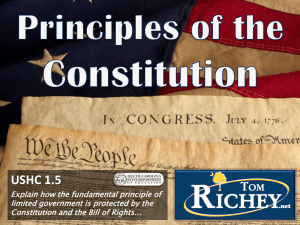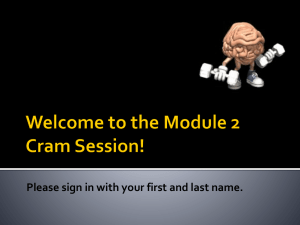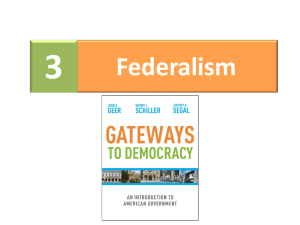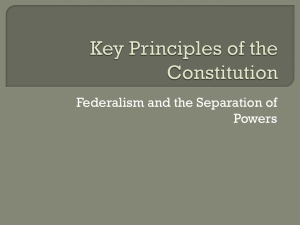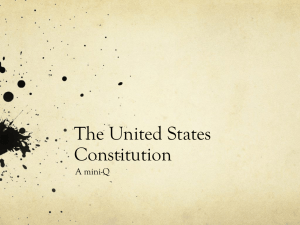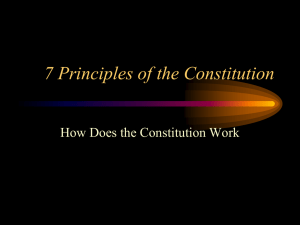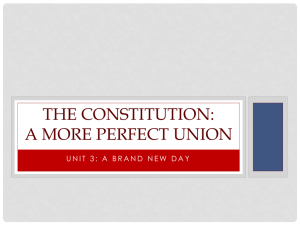Federalism and the U.S. Constitution
advertisement
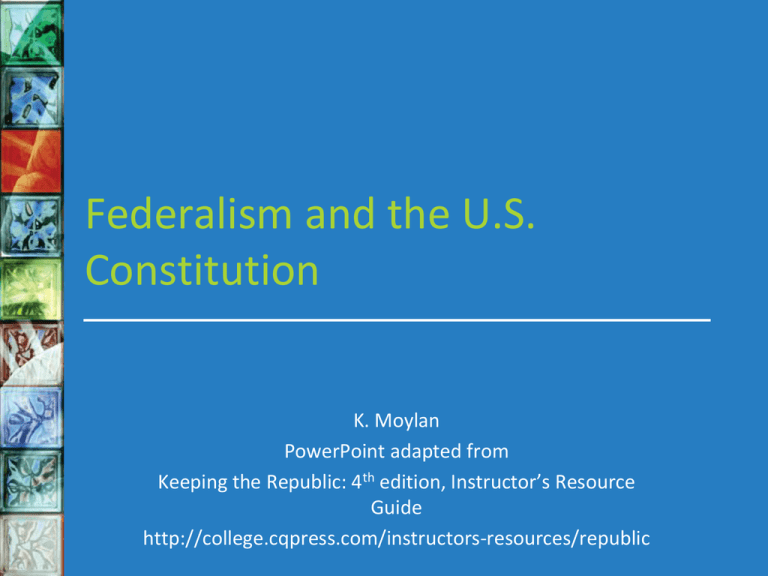
Federalism and the U.S. Constitution K. Moylan PowerPoint adapted from Keeping the Republic: 4th edition, Instructor’s Resource Guide http://college.cqpress.com/instructors-resources/republic The three branches of government • All governments must have the power to – Legislate, or make laws – Administer, or execute laws – Adjudicate, or interpret laws • Because of our separation of powers, we have three branches of government The legislative branch • Legislature: the body of government that makes laws – Bicameral: legislature with two chambers • Article I sets out the framework for Congress • Representation over “pure democracy” – Republic: a government in which decisions are made through representatives of the people • Founders chose bicameral over unicameral legislature, because it provided representation, checks against abuse of power The executive branch • Executive: the branch of government responsible for putting laws into effect • Concerns of the founders – Executive could provide stability – Fear of tyranny – Resolved with single executive: the president • What does the Constitution say? – Chosen by Electoral College – Article II: length of term, executive powers • Possible alternative: parliamentary system The judicial branch • Judicial power: the power to interpret laws and judge whether a law has been broken • The “least dangerous” branch: power of neither the purse nor the sword • Judicial review: power of the Supreme Court to rule on the constitutionality of laws The judicial branch, cont’d. • Article III: sets up Supreme Court but little else • Possible alternative: legislative supremacy? – British model of no constitution Separation of powers and checks and balances • Separation of powers: assigns judicial, executive, and legislative powers to different persons or groups, thereby limiting the powers of each • Checks and balances: the principle that allows each branch of government to exercise some form of control over the others Federalism • Enumerated powers of Congress: congressional powers specifically named in the Constitution (Article I, Section 8) • Necessary and proper clause: constitutional authorization for Congress to make any law required to carry out its powers; also known as the elastic clause Federalism, cont’d. • Supremacy clause: constitutional declaration (Article VI) that the Constitution and laws made under its provisions are the supreme law of the land • Concurrent powers: powers shared by the federal and state governments • Where powers begin and end is confusing and controversial • Modern day example: gay marriage issue Two views of federalism • Dual federalism: national and state governments responsible for separate policy areas – “Layer cake” model of federalism – Model prior to the New Deal era (1930s) • Cooperative federalism: national and state governments share responsibilities for most domestic policy areas – “Marble cake” model of federalism – Model after 1930s What difference does federalism make? • Effects on state politics – States compete for citizens and business • Effects on citizens – Citizen access to different levels of government – Different levels check each other: Civil Rights Act (1964) • Increased flexibility – Experimentation with policy – Citizens may face different laws, treatment among states The changing balance: federalism over time • Vague definition of powers • Two trends: – Government is growing at federal and state levels – Gradual strengthening of federal government at the expense of states Federalism Over Time • John Marshall: strengthened the constitutional powers of the federal government • Civil War (1860s): national domination of the states • The New Deal (1930s): national programs stimulated economy • Civil Rights (1950s and 60s): federal government acted against states: ie Eisenhower and the 101st Airborne in Little Rock American Federalism Today • Devolution: the transfer of powers and responsibilities from the federal government to the states Big question: Which political ideology is in favor of devolution, and which opposed, and WHY? American Federalism Today, cont’d. • Congress influences state policy by – Categorical grants – Block grants – Unfunded mandates: states have to have them, but Congress doesn’t fund them • Devolution has moved forward, but its fate is unclear because some issues favor federal government – Terrorism – Social issues: Environment? Education? Amendment Process • requires two-thirds vote in Congress and three-quarters of state legislatures or conventions agreeing • Possible alternatives: making the Constitution easier or harder to amend (unlikely; Constitution has survived because it is neither too hard nor too easy to change) Big Question: Why are there only 27 amendments to the US Constitution? The citizens and the Constitution • Federal system is remote to many people Big Question: How can Federalism ENHANCE civic participation?




